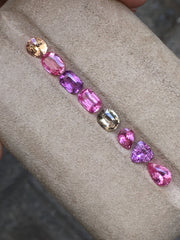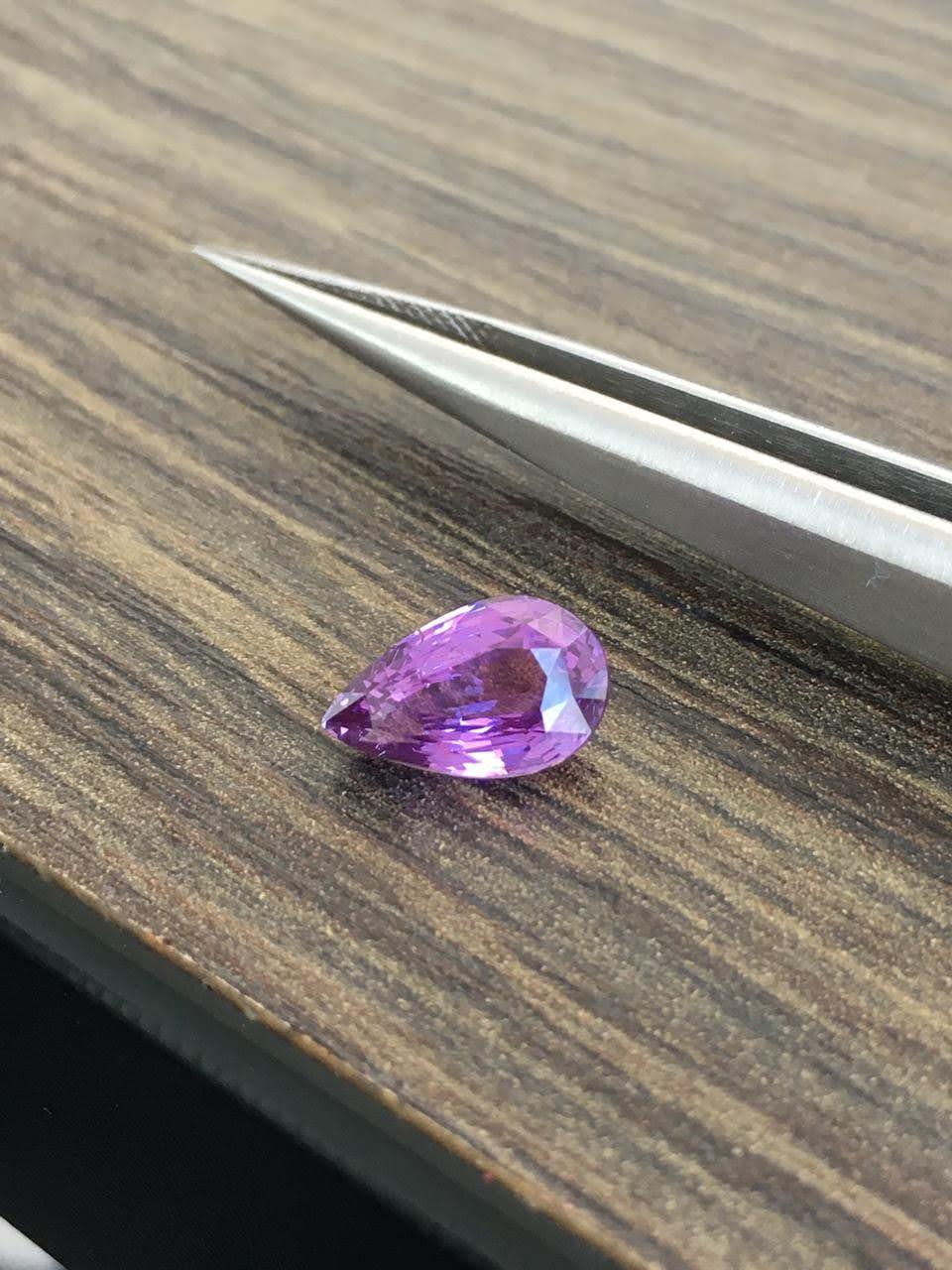Sapphire, like ruby, is the mineral corundum, and the name " sapphire " is generally applied to corundum of any color except the red. More specifically, the name is applied to blue specimens, the desired tints being royal blue and cornflower blue.
Beautiful, Durable, Versatile and plenty of variety! These are a few reasons why people have appreciated sapphires for centuries. In today’s topic we're talking about sapphires, one of our favorite gemstones out there for many reasons.
Colors
The natural sapphire color is usually going to be blue. A very deep kind of sea ocean blue is what they're commonly known for but sapphires are in all different colors! Sapphires come in Pinks, Purples, Oranges, Yellows they even come in Clear form (White Sapphire) and Black. Sapphires are of every color except for red. The red designation for the mineral corundum is in fact Ruby! Ruby and Sapphire are the same mineral (Corundum).

Sapphire also has some interesting names for some of their rarer colors like Padparadscha/ Padmaraja AKA Pad. The Pad is an interesting peachy pinkish color and it's named after the lotus flower. If you can find a Pad, you're lucky! Because it can be a beautiful stone!

Further, let’s take a closer look as to where those colors come from. The colors in sapphires come from what we call trace elements, that means something outside of its typical chemical structure has gotten into the stone itself or the mineral. In most cases the trace elements are only about a percentage or sometimes even less and it causes the color to change! Sapphires would be completely clear if the trace elements were absent. The blue color from the famous blue sapphires is often caused by titanium and/or iron. Yellows and Oranges are usually contributed from element called manganese. Pinks are caused by chromium.
Origins
Sapphires are not limited to any single location. They can be found in multiple locations across the Globe. Some of the high quality sapphires (especially blues) originate from Kashmir and Sri Lanka. Other locations for sapphires are Burma, Australia, India, Madagascar and even in North American regions like Montana have been known for some nice sapphires over the years it's a gemstone that's found all over the world.
Practicality
With regards to the practicality aspect of sapphires (in terms of everyday use), people usually talk about the hardness of sapphire. Sapphire is in fact the hardest natural mineral after Diamonds. This means sapphires have plenty of instances where it is used in practical situations such as watch crystal. Sapphire crystal on watches would make them less prone to scratches.
This durability also makes sapphires an ideal candidate to be used in jewelry and that makes sapphire a fantastic stone for hard-wear jewelry like rings. Rings get worn all the time and they get beat up; thus, sapphires are a great stone since they're incredibly tough and incredibly hard.
Sapphire Treatments
Treatments are a large component of modern-day sapphires. In sapphires it often means heat treatment. Heat treatment is a science all on its own! In fact, depending on the type of heat treatment they can make a stone lighter or darker and it's a very controlled science.
Heat treatment is a common way to improve the coloring of sapphires, sometimes it just evens out the coloring other times it actually will change the color completely. There are instances depending on those trace elements, we talked about above, where sometimes a certain trace element is removed during the heating process and it will change the color entirely. Heat treatment is a common treatment for sapphires, in fact if it's not heat treated, you can generally expect to pay a hefty price for the stone.
Most sapphires sold are accompanied with lab reports to substantiate that claim because most sapphires need to be heated in some way to make the color attractive for somebody wanting it. It's so common and so prevalent that without heat treatment most of us couldn't afford nice sapphires. It should be noted that heat treatments are a widely accepted treatment in the gem trade.
There are some other treatments that are not accepted within the gem trade, and one of them is called diffusion treatment. This is where they've introduced another element into the gemstone through what generally is a high heat process and why this is not typically an acceptable treatment since it's not generally stable and sometimes like in blues it's a surface treatment and it does not penetrate very deep into the stone. As soon as the stone is polished or sometimes even just worked with a jewelers torch you lose that beautiful color. Therefore, diffusion treatments are not accepted.
Rarity
Sapphires are a rare mineral (Corundum being the actual mineral name). Only 1% of all of the mineral corundum (Sapphires and Rubies) found, gets cut into gemstones. The rest of it is strictly used for your abrasives or electronics (mineral jewels inside watches) etc.
The gemstones that you see made into jewelry only account for around 1% of that mineral and even a smaller percentage of that actually make it into jewelry stores many of them are what we call commercial quality where the color is so dark it almost looks black or so light it almost passes for clear stones. These gemstones do not have the same rarity and the colors that we think of as being the most desirable sapphires. A small infantile percentage of that 1% is where the desirable ones are found!
This is just to emphasize that gemstones have quite a rarity if you are curious as to how all of this relates to value.
Interesting facts!
An interesting fact about sapphire outside of the usual is to do with inclusions (things inside the gemstone) that often make it look dirty or cloudy. There are times when inclusions in a gemstone can actually make it more attractive! One instance of that is the Star Sapphire.
Star Sapphire is an extremely desirable phenomenon and it's caused by inclusions in the gemstone forming in a specific way and then cut to show what we call asterism and that is light reflecting off of the domed cabochon (a type of cut) that is giving you this rare phenomenon.
You can also find sapphires that are bicolor! meaning they show multiple colors in the same stone and you can even find sapphires that are what we call color change the most famous color change stone is alexandrite but sapphires in fact can be color change gemstones and that means that they're going to look different from incandescent light to daylight because the elements within the stone are reacting to things like fluorescent light and they make the color change again it's a pretty incredible phenomenon and if you haven't seen it yourself you should definitely witness it some day!

